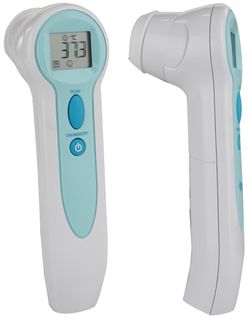We always talk to patients with diabetes about the importance of staying on top of their foot health. It's one of our top office priorities, and that's why we've just introduced a new diabetic foot exam protocol in the office. It's also why we've partnered with Anodyne to provide high-quality, attractive diabetic shoes for our patients. But we can't protect your feet alone, without your help. For that reason, you'll need to take a few different steps. And they happen daily, monthly and annually. Let's look at how to protect your diabetic feet.
4 Ways to Prevent a Diabetic Wound![regular foot exams prevent diabetic foot ulcers]()
As your diabetic podiatrist in Houston, we have a few different ways we can protect your feet. But you also have to be part of the process. Here's what we mean.
1. Daily Foot Checks
Right now, you're the best weapon we have against ulcers. When you're at home, we'll ask you to check your feet. Every single day. We want you to look for any changes in your skin appearance. And to watch for any cuts or blisters. (Here's a full guide to help with diabetic foot exams at home.)
Now, we know it can be hard to keep track of minor skin changes. But that's also very important, because the earlier we notice areas of pressure, the easier it is to prevent problems. Need some help tracking your foot progress? Here's an insider tip to help: take a foot selfie every day.
We know, that sounds like a crazy TikTok or Instagram challenge. But here's why it works. When you snap a footie (or foot selfie) daily, using your smartphone, the picture will get a time and date stamp. Then, if you're ever unsure about your foot's appearance? It's easy to scroll back through your photo album, and identify worrying changes.
2. Watch Your Nutrition.
In new findings released before official publications, researchers found a link between your vitamin D levels and your ulcer risk. Specifically, they learned that levels of vitamin D went down as your ulcer risk went up. And that was especially true for older adults with type II diabetes. What does this mean for you? Well, get your vitamin D levels tested. Then, if they're low, talk to your diabetic care team about the best supplement for your needs.
3. In-office Exams
If you're already checking your feet every day, great job! But now let's talk about your next step: quarterly comprehensive foot exams in the office.
You may be wondering: why should I come in if my feet look great? Well, here's the deal. Even if you're doing a great job at home, we're better equipped to monitor hard-to-reach places like the bottom of your feet. Plus, we have access to high-tech equipment that can spot trouble long before you'd see a visible warning sign.
4. Take your temperature

For a while now, we've understood that the temperature of your feet says a lot about brewing ulcers. Back in 2013, a Journal of Foot and Ankle Research study revealed that monitoring your feet's skin temperature could prevent foot ulcers. And this more recent study shows that inflammation (which can also be detected by changes in temperature) also tells us a lot about wound progression.
Basically, the study proves that higher skin temperature on one foot can predict where an ulcer is about to develop. How? It's pretty simple. Temperature increase is a marker of potentially-dangerous foot inflammation. Which, in turn, often leads to ulcers.
Now, at the time of the study, patients had to keep track of their foot temperature at home. And, when they did, they were more successful at preventing ulcers.
Flash forward almost 10 years, and I'm no longer telling patients to take their foot temperature at home. Instead, I've got some fancy new ways to do that, using the Revealix system. (Not to brag, but that's a pretty big deal. Because our Houston podiatry practice is one of the first in the country to make this system available to patients.)
The process is pretty simple. Revealix uses an external camera. And it's linked to an app to record and track data. Now, when I use the camera, it detects any hot spots on your feet. So, once I know about that temperature increase, I can take pressure off the danger zone. (Either with orthotics, diabetic shoes, or a combination of tools.)
Once pressure lowers, the inflammation should go down. And that will reduce your risk of ulcers. But the system is currently only available in our office. So it's important to keep up with your regular appointments.
New Hope for Treating Diabetic Wounds in Houston
Sadly, even with our best efforts, you may end up with a foot ulcer. Of course, that means you'll immediately need medical attention. But you don't have to give up hope. Because we're seeing constant progress in the fight against ulcers. And that includes some exciting new treatment options.
In our office, we now offer Vaporox, a unique treatment that helps heal wounds that do not respond to traditional treatments. Promoting healthy tissue growth and revascularization, the system delivers a unique blend of ultrasonic vapor and concentrated oxygen to heal without contact. As an early adopter of Vaporox, we are very excited about the unmet needs it can fulfill.
Another ulcer treatment we're watching closely? Researchers from the University of South Australia came up with a new formulation. It's exciting for a few reasons. First, it's not based on antibiotics. So it could be more effective on antimicrobial-resistent ulcers. (In fact, in trials, it proved very good at completely eliminating bacteria.)
See? There are so many reasons to feel hopeful for the future. But, in both cases, taking preventive measures is always better than dealing with infection. Even as our tools for fighting infection get stronger.
Special Bandages for Ulcer Care
Researchers at Queens University in Belfast are working on a new bandage, called a scaffold, that treats ulcers in a new way. Created using 3D bioprinting, the bandage slowly releases antibiotics over a four-week period. This allows for better, more continuous wound care with continuous visual monitoring. Now, results in the Drug Delivery and Translational Research journal reveal great, lower cost outcomes. And that's something we love to hear, since treating ulcers if often costly and challenging.
Animal Excrement: The Strangest New Option from a Diabetic Podiatrist
We're following exciting studies coming out of the UK. They show that virsues found in zoo animal excrement (think baboons, lemurs and certain pigs) could help heal a diabetic wound. Specifically, these substances could help fight some antibiotic-resistant bacteria. Sound too gross for your liking? Why not avoid the conversation altogether? Follow these preventative tips from your diabetic podiatrist.
Stopping Ulcers Before They Start
We teach diabetic patients in our Houston podiatrist's office about preventative care. Either at home or in the office, regular foot exams are still the best way to maintain your diabetic foot health.
Of course, the work you do at home matters a lot. That's why we help you perform critical home inspections between office visits. But we can't say this enough. If you only do home foot checks, you may miss a dangerous warning sign.
That's why we need you to come into our Tanglewood Foot Specialists office. When you do so, we'll use the latest tech to protect your diabetic feet. And, together, we'll take a strong stance against foot ulcers.
Do you know what that means? If you have diabetes in Houston, schedule an appointment with Dr. Andrew Schneider today. It's the best way to start taking proactive steps to protect your feet.





















